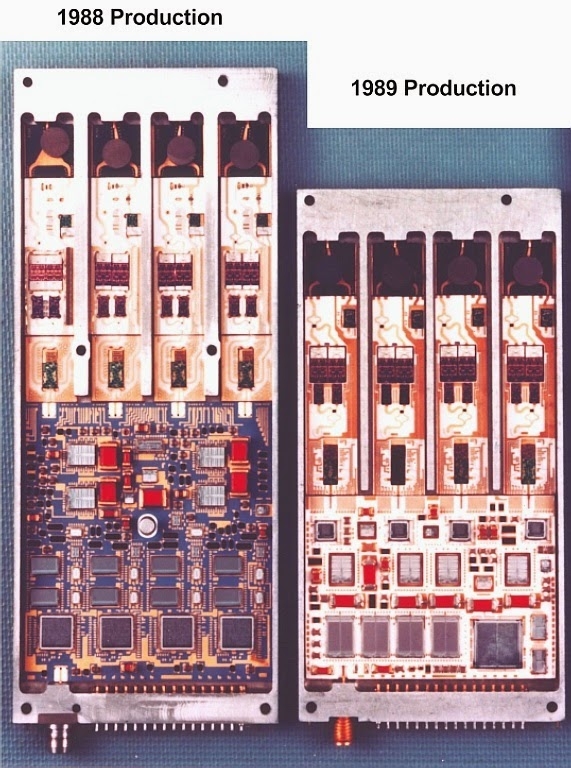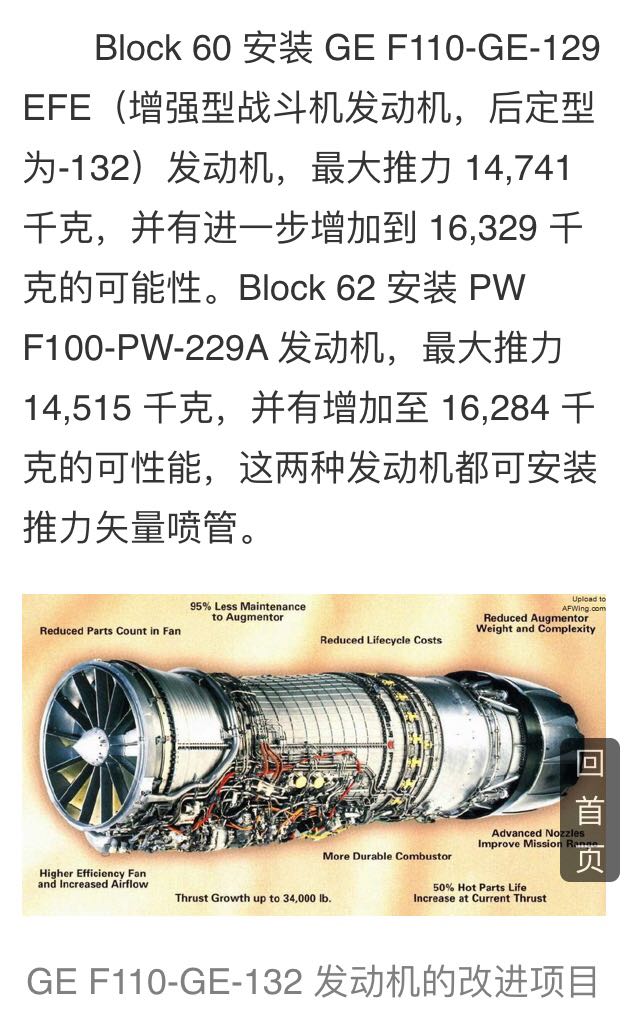我聽電視上的名嘴說F-16V上的SABR AN/APG-83是比F-16 BLOCK60上的AN/APG-80 稍差! 我聽了很不以為然,開始蒐集資料比較,一個10年前雷達怎麼會比十年後的雷達要好呢? 況且 AN/APG-83已經被選為F-16 Block70的標準雷達!
大家補充一下資料吧,讓更多國人知道F-16V上有一個甚麼東西!
關閉廣告
Charlie_H wrote: 我聽電視上的名嘴說F-16V上的SABR AN/APG-83是比F-16 BLOCK60上的AN/APG-80 稍差! 我聽了很不以為然,開始蒐集資料比較,一個10年前雷達怎麼會比十年後的雷達要好呢?...(恕刪)
C大原來您直到昨天才聽說83不如80哦⋯⋯
我在想您應該也不知道F-16V是F-16IN太貴賣不出去以後推出的廉價低性能版吧?
然後F-16V的改裝套件還是不包括全部升級件的性能更差一檔的更廉價的選擇,而台灣買的還是這個選擇裡不包括新式發動機的套件。
(如果用數碼產品來類比,F-16E/F類似於IPHONE6而阿聯酋買的還是頂配的128G版的IP6P,而後面推的F-16IN則類似於IPHONE6S但性價比太差沒人買,隨後推出的F-16V則是專門針對消費能力有限的中低端市場在IPHONE5S基礎上開發的IPHONE SE並且台灣買的還不是新機而是32G版的翻新機)
我先貼幾張圖大家瞧瞧 第一張是四合一AsGa T/R 模組的尺寸變化,如果說只差一年可能不算公平,差一代好了!

US early production quad packed transmit receiver modules. The United States no longer produces quad channel T/R modules and has since produced single T/R module designs. Less advanced AESAs such as the Zhuk-AE utilize multi-T/R channel designs, it is possible China's first generation of AESAs also utilize a multi-T/R channel design. Image Credit: Air Power Australia.
thermal management systems are instrumental for the operation of high power AESA radars. Unlike MSA systems, air cooling systems are insufficient to prevent heat related system failures and frequent maintenance issues as Karlo Kopp details,
Due to the behavior of microwave transistor amplifiers, the power efficiency of a TR module transmitter is typically less than 45%. As a result, an AESA will dissipate a lot of heat which must be extracted to prevent the transmitter chips becoming molten pools of Gallium Arsenide - reliability of GaAs MMIC chips improves the cooler they are run. Traditional air cooling used in most established avionic hardware is ill suited to the high packaging density of an AESA, as a result of which modern AESAs are liquid cooled.US designs employ a polyalphaolefin (PAO) coolant similar to a synthetic hydraulic fluid. A typical liquid cooling system will use pumps to drive the coolant through channels in the antenna, and then route it to a heat exchanger. That might be an air cooled core (radiator style) or an immersed heat exchanger in a fuel tank - with a second liquid cooling loop to dump heat from the fuel tank. In comparison with a conventional air cooled fighter radar, the AESA will be more reliable but will require more electrical power and more cooling, and typically can produce much higher transmit power if needed for greater target detection range performance (increasing transmitted power has the drawback of increasing the footprint over which a hostile ESM or RWR can detect the radar. – Kopp, 2014
想當初052C用氣冷設計還得到中共國家一等獎,得獎時052C上的346雷達還在測試階段,三年後Bug解完了終於可以真正服役,結果是長時間操作散熱不良會當機。那個一等獎張還是掛在南京14所的櫥櫃哩,真是TM的好諷刺。各位可聽說對岸某一款空用AESA也是用氣冷散熱設計,我們先不損它,因為它的還未能真正服役用長時間操作,到時候看看是否像346雷達一般!
關閉廣告




































































































